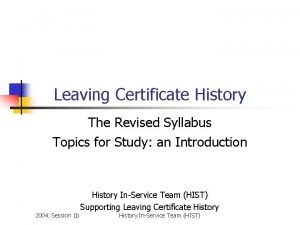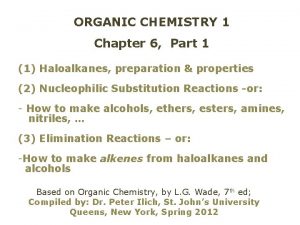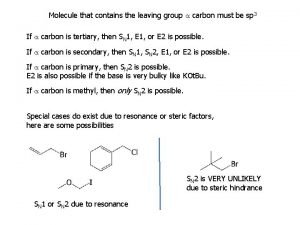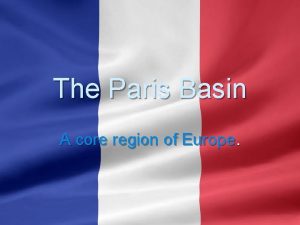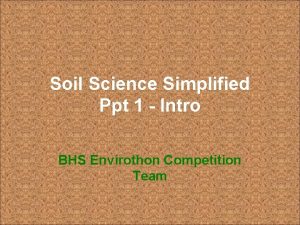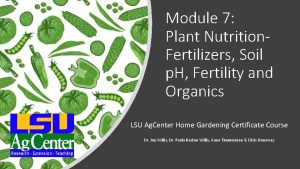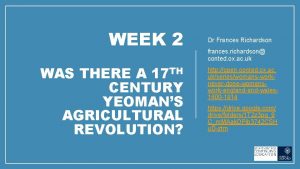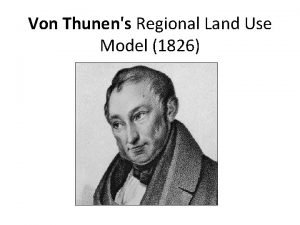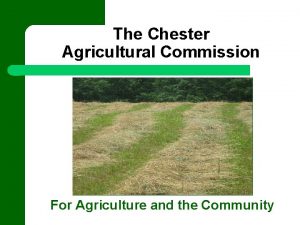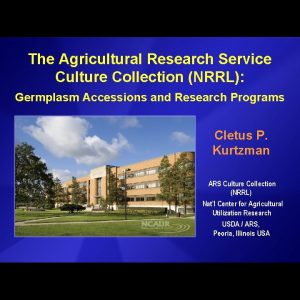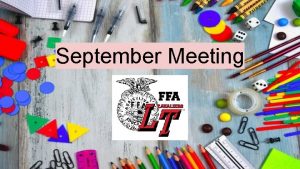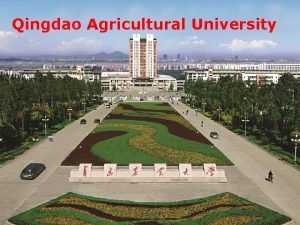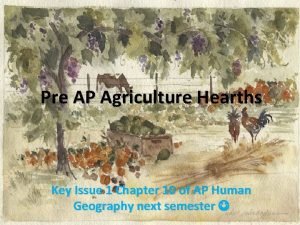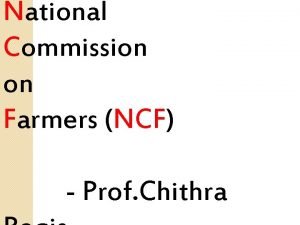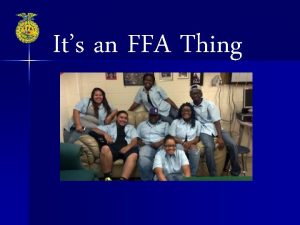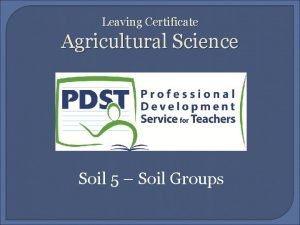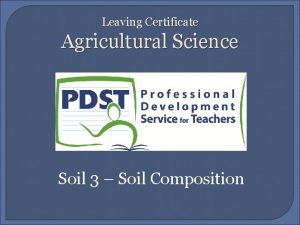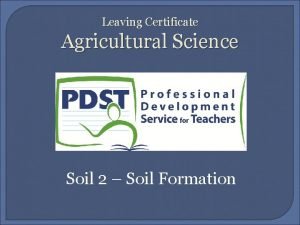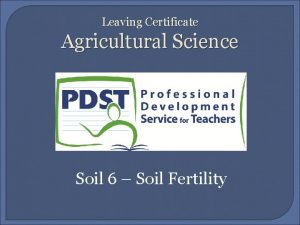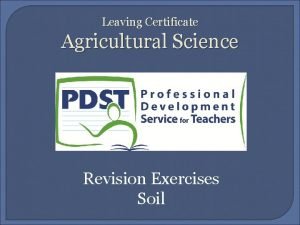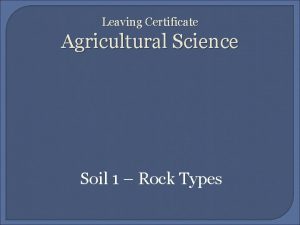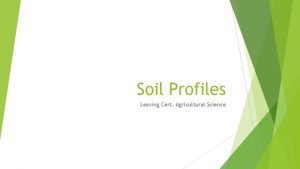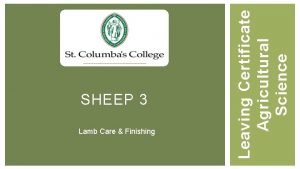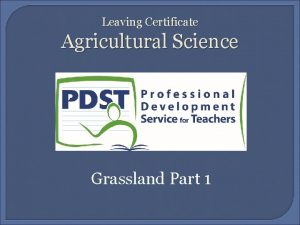Leaving Certificate Agricultural Science Soil 5 Soil Groups






















- Slides: 22

Leaving Certificate Agricultural Science Soil 5 – Soil Groups


The General Soil Map of Ireland � This was first published in 1969, with a second edition in 1980. � These show the distribution of the major soil groups throughout Ireland (and each county also) as well as a discussion on their land use potential. � The major soil groups • • • a. The Podzols b. Brown Podzolics c. Grey – brown Podzolics d. Brown Earths e. Gleys f. Rendzinas g. Lithosols h. Blanket peats i. Basin Peats


Soil Groups � Because of the huge variety of rock types in Ireland there is a huge variety of soil types. � The ordinance survey of Ireland has classified ~15 great groups. � Four of these are of agricultural importance. Grey Brown Podzolics: Top quality soil type very desirable. 2. Brown Earths (acid) : Top quality soil type very desirable 3. Gleys: Intermediate quality 4. Podzols: Poor quality 1.

Soil Profiles � These are gotten by digging down vertically into a soil to its parent rock and looking face on at the different layers. � Profiles using the colour, texture and depth of a soil tell us all the properties of that particular soil. �Horizon (Peat) only appears in Podzol. It is made up of Organic Matter. �A Horizon – Topsoil �B Horizon – Subsoil �C Horizon – Parent Rock



Profile of a Grey Brown Podzolics – top quality A 1 Earthworm activity has increased OM causing dark colour (3 -6 cm) A 2 Mature* well drained mineral soil. High C. E. C. – fertile, good friability (5 -7 cm) B 1 Has a slightly darker colour due to translocation of clay fraction. This is a horizon of enrichment. Texture is heavy or blocky. C This is calcareous rock (limestone). It is permeable (porous). Generally there is never a drainage problem.

Profile of a Grey Brown Podzolics – top quality *Maturity –relatively stone free. � This soil is used extensively for tillage (malting barley). Most crops are grown under contract for the 2 major breweries (Guinness and Murphy’s).

Profile of a Brown Earth (Acid) – Top Quality

Brown Earths A 1 This is a mature welldrained mineral soil – well-aerated sand, silt and clay, friable, good structure, good root penetration (60 cm) A 2 Accumulation of leached calcium ions C Calcareous parent material –limestone – porous and permeable

Profile of a Brown Earth (Acid) – Top Quality � These soils are mature, well drained mineral soils. � They have not suffered from serious cases of leaching (loss of minerals) � They have a uniform profile (i. e. No distinct horizons or layers) � The Brown Earths in Ireland are mainly found in areas where the underlying rock is acidic, and therefore the soil is acidic.

Profile of a Brown Earth (Acid) – Top Quality � With regular liming and fertilising the soils can be quite a productive soil. � Brown earth soils have an extensive use range, however they are used mainly for grazing. � They are the soils of the Golden Vale – East Limerick, South Tipperary, Waterford, and North and West Cork, and are all excellent producers of grass for the liquid milk market.

Profile of a Gley Soil

Profile of a Gley Soil A 2 Thin layer of topsoil Accumulation of OM darkened colour. gives B Accumulation of clay particles. Blue-grey in colour and has mottles of Fe. Leaching is not a feature. Texture is heavy due to capillary water trapped by clay particles – structure less. C Generally impermeable sandstone rock.

Profile of a Gley Soil � Gley soils form on areas of rolling lowland or gentle sloping hillsides. � They suffer from frequent water logging (West of Ireland 205 rain days annually). � They develop of impermeable parent rock and suffer because of excess run off from higher ground. � Gleys have a limited use range.

Profile of a Gley Soil � They are confined mainly to summer grazing. � Stock will have to be removed during the winter to prevent poaching. � However with careful draining and liming the potential of this land is hugely increased e. g. mole drains (15 cm deep)

Profile of a Podzol soil – very poor

Profile of a Podzol soil – very poor O A layer of organic matter. If it exceeds 30 cm it is referred to as a blanket bog. Sphagnum moss grows here (can absorb ~10 X its own weight in water). Here there anaerobic conditions. B 2 A very poor subsoil – very strong Bir Impermeable iron pan – behaves like a perched water table C Generally an acid rock. Typical example – old red sandstone.

Profile of a Podzol soil – very poor � If water logging or flooding occur, then little or no oxygen will be available and organic matter will eventually form an O Horizon. � This is the first stage of a formation of a peat and the soil is now known as a Peaty Podzol. � When the O Horizon becomes deeper than 30 cm, then the soil is no longer podzol, but is now a blanket peat.

Profile of a Podzol soil – very poor � Podzols are not very useful as tillage soils, or for grazing. � This is due to their poor drainage and poor root penetration. � It has an extremely limited use range. It is confined almost exclusively to forestry (conservation). � Where it is used for agriculture – commonage – but they suffer from severe leaching when overgrazed.
 Leaving cert history syllabus
Leaving cert history syllabus Primary school leaving examination in chinese
Primary school leaving examination in chinese Clonakiltycc vsware
Clonakiltycc vsware Leaving group chart
Leaving group chart Which molecules contain good leaving groups?
Which molecules contain good leaving groups? Agriculture in the paris basin
Agriculture in the paris basin How are ethnic groups and religious groups related
How are ethnic groups and religious groups related Why science is your favourite subject
Why science is your favourite subject Living soil vs dead soil
Living soil vs dead soil Four major spheres of the earth
Four major spheres of the earth Cs.princeton.edu
Cs.princeton.edu Soil science simplified
Soil science simplified Advantages of fertilizers
Advantages of fertilizers The agricultural revolution
The agricultural revolution Von thunen model frq
Von thunen model frq Johann heinrich von thünen theory
Johann heinrich von thünen theory Chester agricultural center
Chester agricultural center Nrrl culture collection
Nrrl culture collection To practice brotherhood honor agricultural
To practice brotherhood honor agricultural Qingdao agricultural university
Qingdao agricultural university Agricultural hearths map
Agricultural hearths map What is the component of agricultural renewal action plan
What is the component of agricultural renewal action plan Ffa pledge to practice brotherhood
Ffa pledge to practice brotherhood
